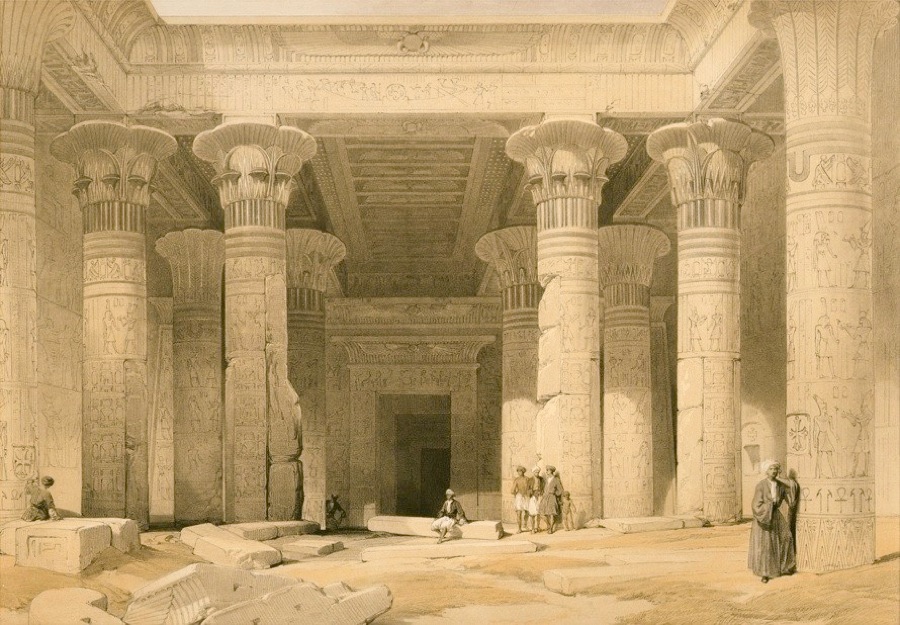GRAND PORTICO OF THE TEMPLE OF PHILÆ, NUBIA.
“MANY parts of this building,” says Wilkinson, “particularly the portico, though not possessing the chaste and simple style of the Pharaonic monuments, are remarkable for lightness and elegance; and, from the state of their preservation, they convey a good idea of the effect of colour combined with the details of architecture.”
The existing brightness of the colours upon the ceiling and capitals of this beautiful portico furnishes, perhaps, the most perfect specimen that remains to us of such decorative art, as it was employed to enrich and beautify the Temples of Egypt. In its use here exquisite taste has been displayed in design and arrangement, and the result is a beauty and harmony in the effect which, while under contemplation, excites an emotion of pleasure which cannot be described; and so perfect is the colouring that remains to us in many parts, that we are aided to imagine what the effect must have been in the structures of Thebes when those gorgeous halls and temples, yet in their pristine beauty, were so enriched, and at a period, from the evidence which exists, the highest in art, in the history of Egypt.
Under the cove of the cornice, and immediately over the grand entrance, is the winged sphere, the attribute of Athor. Extending from this on either side around the court are a succession of the cartouches of the Ptolemaic founders, and in the centre of the frieze is represented the sacred boat, or ark, with the scarabæus and other emblems. Immediately below, and on the soffits between the centre pillars, the sacred beetle is again represented, but with expanded wings: this emblem, alternated with the sacred vulture, thence extends to the great entrance of the adytum. The rest of the ceiling is spangled with gold stars upon a blue ground: and the effect, together with the elaborate carving of the walls and columns, is very magnificent.
In this Temple, a screen formerly existed between the front row of pillars: this has been removed, but when or why it is difficult to conjecture. In the great French Work on Egypt these columns are represented as perfect, and as if such a mural screen had never existed; but the rough parts by which the pillars to the connecting screen were thus attached are as obvious as they are represented in Mr. Roberts’s sketch. It might have been removed by the early Christians, for the ruins of a Christian altar are here; and the symbol of the Greek cross is still seen on various parts, and on the columns of the portico - evidence of the appropriation of this, as were most of the temples in Nubia, to the Christian worship when our holy religion was established in the valley of the Nile.
Wilkinson’s Egypt and Thebes Roberts’s Journal.


